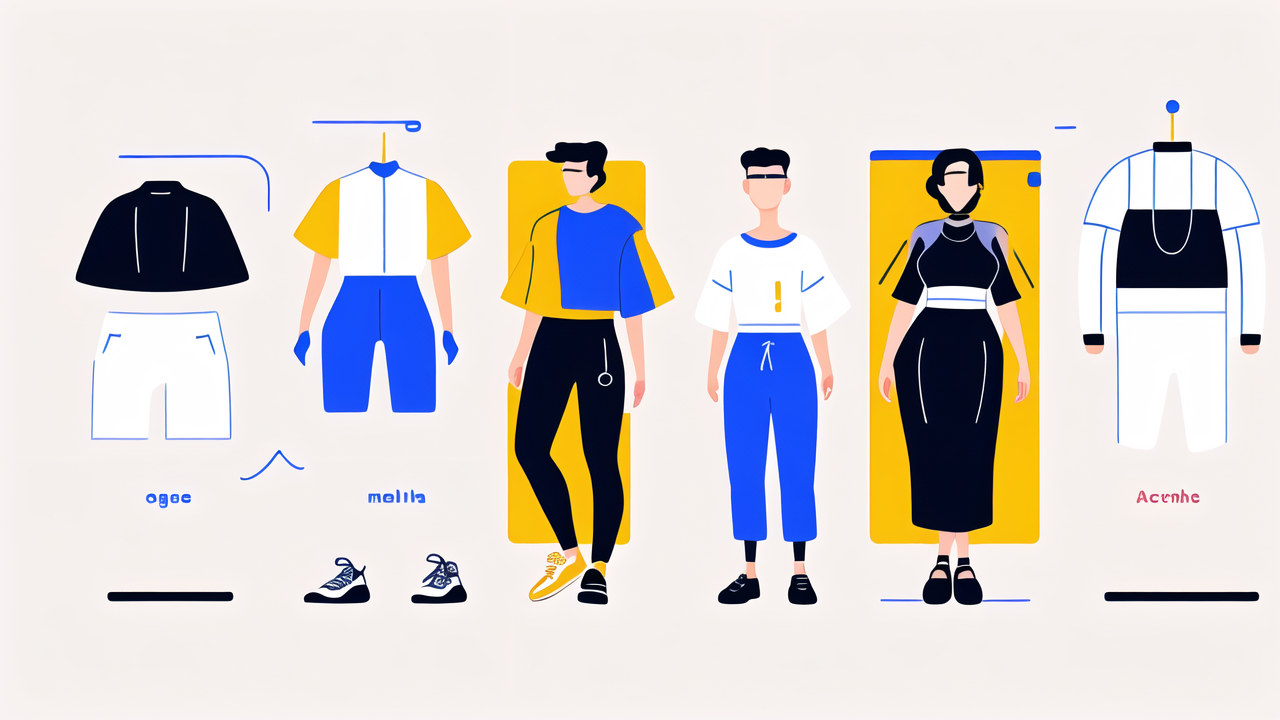Understanding the Evolution of Wearable Technology in Fashion
The Intersection of Tech and Apparel
Fashion and technology are merging in exciting ways. Wearable tech is no longer just about fitness trackers. It now includes smart fabrics and connected clothing. These innovations are changing how we interact with our clothes.

Designers are creating garments with built-in sensors and devices. These can monitor health, adjust temperature, or even change color. The goal is to make clothing more functional and personalized.
Companies like Google and Apple are partnering with fashion brands. They're working to create stylish tech-enabled accessories. This collaboration is pushing the boundaries of what's possible in fashion.
Advancements in Fabric Innovation and Fit
New fabrics are revolutionizing the fashion industry. Scientists are developing materials that can react to the environment. Some fabrics can change shape or texture based on temperature or moisture.
3D printing is also making waves in fashion. It allows for custom-fit clothing and unique designs. Designers can create complex structures that weren't possible before.
Sustainable materials are another focus. Brands are using recycled plastics and organic fibers. These eco-friendly options are becoming more popular with consumers.
The Role of AI and Machine Learning in Tailoring Experience
AI is transforming how we shop for clothes. Virtual try-on technologies use AR to show how clothes will look on you. This helps reduce returns and improves customer satisfaction.
Machine learning algorithms can analyze your style preferences. They can then recommend outfits that match your taste. This personalized approach is changing online shopping.
AI is also helping designers create new styles. It can analyze trends and predict future fashion directions. This data-driven approach is making fashion more responsive to consumer needs.
Fila Apex: A Case Study in Fashion Forwardness
The Design Philosophy Behind Fila Apex
Fila Apex represents a bold step into the future of athletic wear. The line combines Fila's heritage with cutting-edge technology. It's designed to enhance performance and style.

The Apex collection focuses on adaptability. Clothes can adjust to different weather conditions and activities. This versatility is key to the modern, active lifestyle.
Fila's designers prioritized comfort and functionality. They used lightweight, breathable materials. The goal was to create gear that feels like a second skin.
Technological Integration in Fila's Latest Line
Fila Apex incorporates several innovative features. Some pieces have built-in heating elements for cold weather. Others use moisture-wicking fabrics that keep you dry during workouts.
The line also includes smart fabrics that can track movement and heart rate. This data syncs with smartphone apps to provide detailed fitness insights.
Fila has also experimented with UV-protective materials. These help protect wearers from sun damage during outdoor activities.
Market Reception and Consumer Trends
The Fila Apex line has been well-received by consumers. Many appreciate the blend of style and functionality. The smart features have attracted tech-savvy fitness enthusiasts.
Sales data shows a growing demand for high-tech athletic wear. Consumers are willing to pay more for clothes that offer extra benefits.
Reviews highlight the comfort and durability of Apex products. Users also praise the seamless integration of tech features.
The Economic Impact of High-Tech Fashion in the United States
The Growth of the Wearable Tech Industry
The wearable tech industry is booming in the US. Market reports show steady growth year over year. This includes both fitness trackers and smart clothing.

Investments in wearable tech startups have increased. Big tech companies are also entering the market. This competition is driving innovation and lowering prices.
Job creation in this sector is on the rise. It's creating opportunities for engineers, designers, and data scientists.
Consumer Spending and the Demand for Quality Wearables
Americans are spending more on wearable technology. The average consumer now owns multiple smart devices. This includes smartwatches, fitness bands, and connected clothing.
There's a growing demand for high-quality, durable wearables. Consumers are looking for products that last longer and perform better. This trend is pushing brands to improve their offerings.
The health and fitness boom is driving sales of wearable tech. People want devices that can help them track and improve their well-being.
The Future of Fashion Retail in the Age of Smart Devices
Retail stores are adapting to the rise of smart fashion. Many are incorporating tech displays and interactive fitting rooms. These features enhance the shopping experience.
Online retailers are using AI to provide personalized recommendations. Virtual try-on tools are becoming more common. These technologies are changing how people shop for clothes.
The line between tech stores and fashion boutiques is blurring. Many shops now offer both traditional clothing and wearable devices. This convergence is creating new retail experiences.
As wearable tech becomes more mainstream, it will reshape the fashion industry. Brands that embrace innovation will likely lead the way. The future of fashion is smart, connected, and tailored to individual needs.




Leave a comment
This site is protected by hCaptcha and the hCaptcha Privacy Policy and Terms of Service apply.